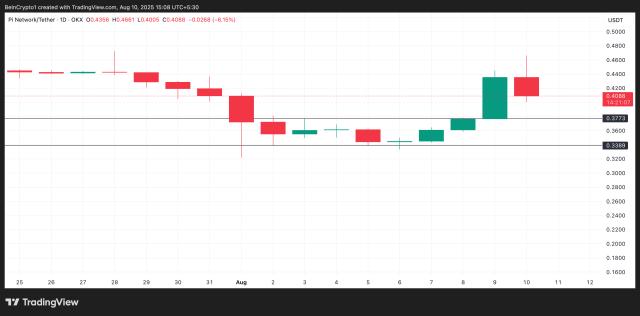The cryptocurrency market maintains its value around $3.7 trillion with Bitcoin fluctuating near $114,500 and Ethereum over $3,650. Despite temporary price stability, an optimistic sentiment is quietly increasing due to institutional investor movements and the growth of stablecoin capital.
The current market fluctuations reflect a balance between safe-haven demand and the trend of capital shifting towards large-cap assets, amid complex geopolitical contexts and increasing volatility. This is a critical stage for observing capital flow trends and market sentiment.
- Bitcoin maintains price around $114,500 despite geopolitical pressures and market volatility.
- Large institutions are expanding cryptocurrency investment portfolios, particularly increasing ETH and BTC in their treasuries.
- Stablecoin expands strongly with a market capitalization near $275 billion, creating new liquidation and high-yield opportunities.
How Will Bitcoin Maintain Its Position in the Context of Geopolitical Tensions?
Bitcoin is consolidating its price around $114,500 after a slight adjustment from the July peak of $123,100, showing signs of stabilization as profit-taking activity slows down.
On-chain data from glassnode indicates a supply gap between $110,000 and $117,000, creating a solid support foundation for Bitcoin. The Cryptocurrency Fear and Greed Index is currently at a neutral 54, reflecting increased short-term caution.
Particularly, capital movement from Altcoins to blue-chip assets like BTC is occurring, along with developments such as the US imposing high tariffs on Indian, Japanese, and pharmaceutical goods, contributing to cryptocurrency becoming a safe-haven option.
Bitcoin could create a new wave similar to the late 2024 explosion, when the price rose from $70,000 to $100,000 after the US election event.
Galaxy, cryptocurrency trader, 2025
How Are Large Institutions Influencing the Bitcoin and Ethereum Market?
Parataxis Holdings is conducting a SPAC merger valued at $400 million, expected to raise a total of $640 million, of which over $30 million will be used to purchase Bitcoin.
This strategy is similar to MicroStrategy, demonstrating strong belief and commitment from institutional investors in accumulating Bitcoin as a reserve asset.
Ethereum is also benefiting as the entertainment company SharpLink adds 83,000 ETH, raising its total holdings to 522,000 ETH, equivalent to over $10.8 billion. Currently, 64 companies are holding nearly 3 million ETH, representing about 2.45% of the total supply, indicating long-term confidence in ETH's value.
Large companies' decision to accumulate ETH and BTC in their treasuries proves the growing attractiveness and position of cryptocurrency in the modern financial era.
SharpLink, Blockchain entertainment company, 2025
How Does Stablecoin Development Impact the Cryptocurrency Market?
Stablecoin has been continuously expanding for seven consecutive months, reaching a market capitalization of nearly $275 billion, playing a crucial role in creating liquidation and bridging from fiat to cryptocurrency.
Ethena USDe stablecoin stands out with a 75% increase since mid-July, currently the third-largest stablecoin with a market capitalization of $9.5 billion, simultaneously attracting investors with attractive yields ranging from 10% to 19%.
Additionally, China is planning to launch its first stablecoin aimed at internationalizing the renminbi and reducing the USD's influence in global trade.
Frequently Asked Questions
At What Price is Bitcoin Currently Trading?
Bitcoin maintains a price around $114,500, continuing its long-term upward trend despite short-term adjustments.
Why Are Institutions Accumulating Bitcoin and Ethereum?
Institutions view BTC and ETH as safe reserve assets with long-term price appreciation potential, helping to diversify portfolios and preserve value.
What Role Do Stablecoins Play in the Current Market?
Stablecoins provide stable liquidation, bridging fiat and cryptocurrency, while creating significant yield opportunities for investors.
How Do Geopolitical Fluctuations Affect Cryptocurrency?
Geopolitical tensions drive capital flow towards cryptocurrency as a safe-haven channel and risk diversification method.
What is the Current Capital Flow Trend of Investors?
Investors are shifting capital from small Altcoins to large-cap assets to minimize risks during volatile periods.







